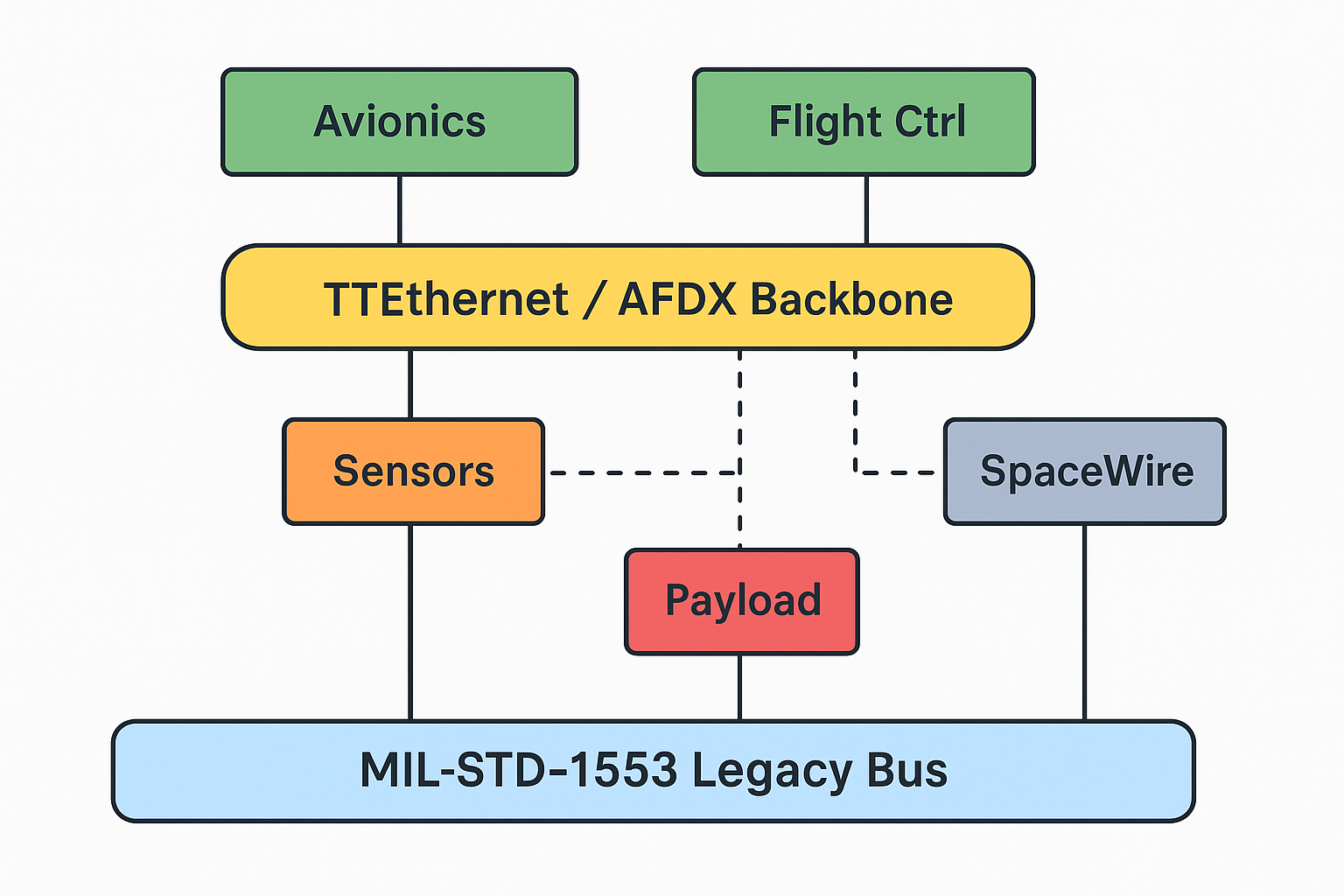
Next-Generation Interfaces for Safety and Mission-Critical Aerospace Systems
Next-Generation Interfaces for Safety and Mission-Critical Aerospace Systems
As aerospace systems evolve, so do their requirements for data exchange: higher bandwidth, stronger security, seamless integration, and uncompromised reliability. While protocols like MIL-STD-1553 set the standard for decades, the next wave of avionics and space systems demands new communication architectures. Here is a look at the emerging next-generation interfaces shaping the future of mission and safety-critical applications.
What is it?
An extension of Ethernet, TTEthernet adds time-triggered mechanisms for deterministic, scheduled communication. It allows critical control data and non-critical payload data to share the same physical network�each with guaranteed bandwidth and latency.
Where is it used?
- NASA Orion spacecraft
- ESA projects
- Some next-gen airliners and satellites
Key Benefits:
- Gigabit bandwidth scalability
- Predictable timing (determinism)
- Fault tolerance and redundancy
- Supports mixed-criticality traffic
What is it?
Aerospace-adapted Ethernet standard using virtual links, strict policing, and redundancy for reliable, deterministic networking.
Where is it used?
- Airbus A380, A350
- Boeing 787 Dreamliner
- Modern military transports
Key Benefits:
- 100 Mbps or more per link
- Redundant, switched network
- Virtual links isolate traffic for safety
- COTS hardware, lower weight/cabling
What is it?
A space-grade high-speed serial protocol for interconnecting sensors, payloads, and control systems.
Where is it used?
- ESA, NASA, JAXA satellites and probes
- International Space Station
Key Benefits:
- Flexible topologies: point-to-point, networked
- Speeds up to 400 Mbps (and growing)
- Low power, EMI resilience
- Well-supported in the space community
What is it?
Controller Area Network (CAN) and its extensions (CAN FD) for real-time, robust communication in smaller aircraft and drones.
Where is it used?
- UAVs, business jets, rotorcraft
- Intra-satellite systems
Key Benefits:
- Simple, lightweight
- Cost-effective
- Enhanced error handling
What is it?
High-speed, fiber-optic-based protocols initially developed for IT/datacenter use, now adapted for high-reliability, EMI-immune aerospace systems.
Where is it used?
- Advanced fighter jets
- Next-gen satellites
Key Benefits:
- Multi-gigabit bandwidth
- Complete EMI immunity
- Long-distance transmission
- High data integrity
What is it?
Use of ultra-reliable wireless links for non-critical or backup communication (e.g., Wi-Fi 6E, 5G, Ultra Wideband) in the cockpit, cabin, or even between modules in modular satellites.
Key Benefits:
- Reduces cabling weight and complexity
- Quick reconfiguration
- Still under evaluation for true mission/safety-critical roles
As cyber threats to aerospace systems grow, next-gen interfaces are being designed or retrofitted with:
- Encryption (hardware-accelerated)
- Authentication
- Real-time Intrusion Detection
- Secure Boot and Key Management
Protocols like TTEthernet and future SpaceWire evolutions are integrating these features natively.
Conclusion: Toward Hybrid, Adaptive Architectures
No single protocol will replace all others�each has unique strengths. The future of safety and mission-critical interfaces lies in hybrid networks:
- Deterministic buses (TTEthernet, AFDX) for flight control
- High-bandwidth channels (SpaceWire, Fibre Channel) for payloads and sensors
- Secure gateways to ensure system integrity
Adaptability, modularity, and security will drive aerospace communication protocols forward, ensuring new systems meet tomorrow�s mission demands�safely and reliably.